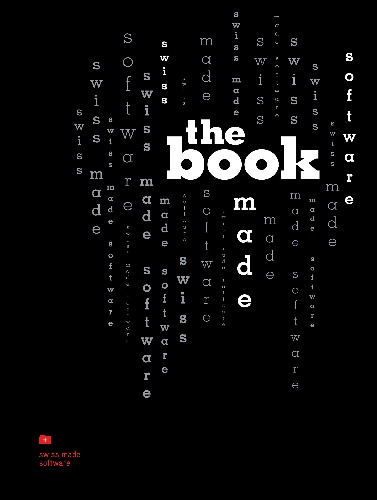Interview with Geri Moll: "Joy is the best work motivation"
Founded in 1984, Noser Engineering AG is a traditional brand on the Swiss ICT market. With customers like ABB, Siemens, Phonak and Roche, the company is positioned as an ICT service provider in both the industrial and technology sectors. It operates through five competence centers: «Microsoft Technologies», «Embedded and Realtime Systems», «Java/Android» as well as «Testing» and «Project Management ». Noser was even involved in the development of Android, building all of the Core Libraries for Google.

Noser Engineering is also the nucleus of the Noser Group, one of Switzerland’s larger ICT corporations. The Noser Group currently generates sales revenues of some 80 million Swiss Francs with around 450 employees.
- Christian Walter: Mr. Moll, due to your company’s involvement, a relevant component of the operating system Android is “Swissmade”. Does that put you in the pole position with regard to new applications?
-
Geri Moll: Partly, yes. We’re attractive especially for complex developments in larger companies. Just look at our client roster: With technically oriented companies like AMG Mercedes, Swisscom, Biral and Rinspeed, or search.ch and Switzerland Tourisum in the commercial sector. However, developing applications on Android is a discipline that differs entirely from development of the operating system itself.
- Your Android deal created little public resonance. Why?
-
The public cares more about apps than basic developments in an operating system. Despite Android’s success, its origin is just not that relevant. And that’s a shame, but it’s also typically Swiss. We’re not particularly good at marketing. Very much in contrast to the Americans— they already sell an idea before a product is finished. For Swiss engineers, that’s unthinkable. The product must be finished first and fulfill their quality expectations.
- Perhaps Switzerland should import some marketing pros instead of engineers?
-
That’s a good idea, especially for the international market. Switzerland is a world champion in innovation but an amateur in marketing. No wonder foreign companies successfully sell ideas that that are developed here. We simply don’t communicate our enthusiasm well enough. International marketing could be very important. Especially if we consider the economies of scale that can be achieved by selling in large markets. That costs money, of course, but it also opens up corresponding sources of income.
- How strongly does the continuing economic crisis impact your business?
-
So far, not at all. Quite the opposite: 2011 and 2012 were our most successfull years ever. That is why we’re still pursuing a growth strategy and keep recruiting good engineers. The term “hiring freeze” doesn’t really figure in our vocabulary.
- The Swiss Franc has risen considerably. Don’t you feel pressure from offshore providers?
-
The strong Franc has certainly intensified international competition. One Euro is now worth only 1.2 Swiss Francs. It used to be 1.5 or 1.6. That’s tough, but it was considerably worse during the period of Swiss Franc/Euro parity. But it had an impact, no doubt. Many companies that used to develop and manufacture locally have turned to nearshoring. That’s painful, but the Swiss industry has nonetheless managed to remain attractive. I’m sure this is in no small part due to our high quality standards.
- Is “Swiss-made” still a value proposition?
-
Definitely. When we work abroad, we receive hourly rates above the local level. Perhaps not always, but certainly whenever quality requirements are high. Apart from that, nearshoring doesn’t always lead to savings. For big projects you can’t expect more than ten percent. And that doesn’t apply to small and mid-sized projects below 500,000 Francs. The situation can even reverse with projects that require a highly communicative and agile approach. This is where local companies with committed and qualified employees have a big advantage. You can sense my enthusiasm: Swissness and hence also Swiss-made software are rightly regarded as strong values.
- Is the local commitment to quality part of the Swiss culture?
-
Yes, to some extent. But we also offer an environment that supports a focus on quality—flat hierarchies, for example. In addition, we permit and foster people’s desire to contribute their own ideas and participate. That is also reflected in our motto “Technology—Joy in life—Performance”.
- Joy in life certainly isn’t a thing many companies subscribe to.
-
Well, we do, and that philosophy is important for us. We are convinced that people can only perform well if they are at one with themselves. And for that, there must be some counterbalance outside the sphere of work. Being able to enjoy life also enables people to enjoy work. And there is no better motivation than enjoyment. So it can’t be in a company’s interest to have their employees work 16- hour days and be on call for 24 hours.
- Aren’t IT jobs regarded as particularly stressful anyway?
-
I do sometimes envy rail engine drivers. In contrast to us, they can’t take their job home. And switching off in the evening undoubtedly isn’t easy for developers. Unsolved problems stick in your mind and simply won’t let go.
- And employers can exploit that brazenly?
-
It must be admitted: IT professionals are a special breed. Where else can you look up from your monitor at ten p.m. only to discover that you aren’t the only one still present? That’s why we actively try to reshape this culture. This goes for any kind of exploitation—selfmade or other. In this way we maintain the kind of enthusiasm that produces excellence. And this is why we—and the majority of Swiss industry—are not just “good enough”. We’re good to excellent.
- Noser Engineering not only develops in the Android environment, but for all major mobile platforms. Do you believe Windows Phone has a future?
-
Windows Phone is now the number three worldwide. Admittedly. its market share is still less than four percent, but I believe it will make its way. Just bear in mind that Android is already five years old. And Microsoft has committed significant resources to Windows Phone, including a global campaign for business solutions. As a Gold Partner, we play an important here and are also a strategic partner for business apps. That’s why you will find our solution for Switzerland Tourism next to leading global apps like Skype, Twitter on the official Microsoft page for the Windows 8.1 Preview.
- With Android, you have recently entered the automotive sector 88-89. Will Apple and Microsoft follow suit?
-
Automotive manufacturing is dominated by large volumes and hence interested in low or zero license fees. Android provides this as well as unrestricted adjustment options due to it being open source. This includes things like connecting sensors or actuators as well as designing their own user interfaces. In combination with the update options, that leaves only Android.
- Which other industries are likely to see an Android invasion?
-
I can’t imagine any restrictions: home entertainment, central building control systems, transportation, medical engineering. Just about everywhere, the Android boom meets the trend towards the Internet of Things. A favorite example is the refrigerator that restocks itself, or control technologies for smart grids or smart homes.
- Do you see any other important trends?
-
Wherever the Internet of Things and big data combine we will see entirely new developments. With big data we currently see a move away from big aggregates towards individual data. The question no longer is “how many cars are travelling on the A1?”. It’s “who’s driving, and how often does he apply the brake?”. These results can be turned into an early warning indicator for traffic jams.
